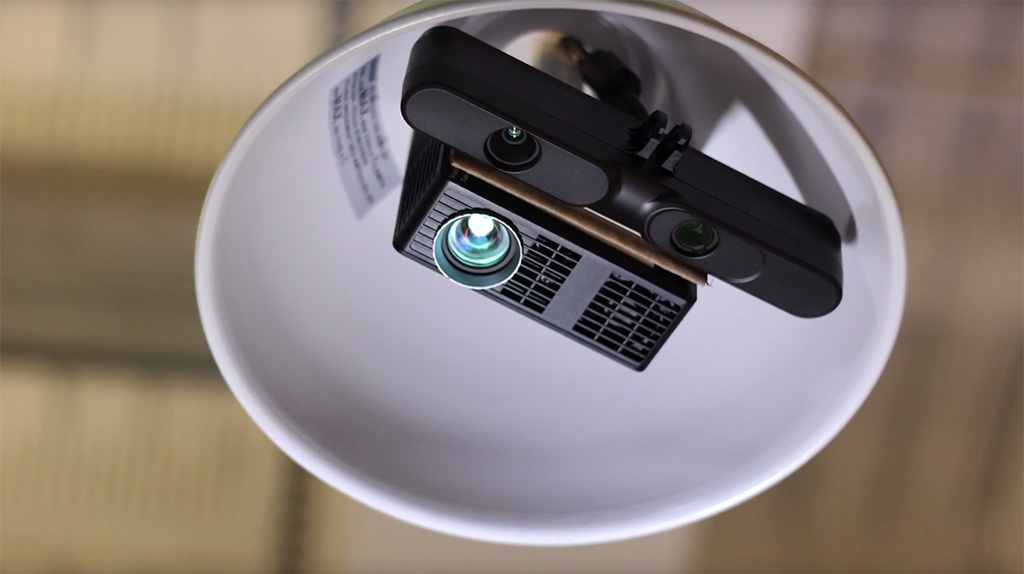Your desk turns into touch screen with a lightbulb replacement
A new take on an old concept.

Like something out of a sci-fi movie, researchers at Carnegie Mellon University's Future Interfaces Group have developed a proof-of-concept for turning your desktop into a virtual touch display. Granted, we have seen this before, but this particular implementation is closer to what Hollywood often portrays in sci-fi movies, as it goes beyond a simple keyboard interface.
The researchers outlined their "Desktopography" prototype in a paper that will be presented at the Symposium on Engineering Interactive Computing Systems in Lisbon, Portugal. In its current form, the device consists of an overhead projector and depth camera shaped like a lamp that beams images onto a desk surface.

What makes this unique is that the images conform to the desk rather than the other way around. For example, if you have a virtual calculator open on your desk and place a soda can on top of it, the beamed image will relocate itself.
"Because physical objects cannot move or resize on their own, the burden of responsiveness falls to the digital elements. Thus, digital applications must employ a variety of strategies to successfully cohabit a work surface with physical artifacts," the paper explains.
The result is an augmented desktop that is far smarter than previous attempts to utilize desk surfaces. In this case, beamed images establish relationships with objects that are on the desk. In doing so, a user can snap a virtual interface to a physical device, such as a laptop. Imagine having a set of gaming macros on your desk. If you snap the gaming keys to your laptop, the virtual interface will follow wherever it goes, as if it is physically attached.
Users can also have multiple interfaces open, each of which can be repositioned, reoriented, and resized as needed. Multi-touch gestures are supported, too.
If this exits the prototype stage and becomes an actual shipping product, we imagine the initial focus will be on productivity applications. However, we can think of different ways this could be handy for gaming. Imagine having an interactive map on your desk surface, one that you can scroll, zoom, and even mark. That could get tricky with a mouse and keyboard setup, but there is potential for developers to get creative.
Keep up to date with the most important stories and the best deals, as picked by the PC Gamer team.
Paul has been playing PC games and raking his knuckles on computer hardware since the Commodore 64. He does not have any tattoos, but thinks it would be cool to get one that reads LOAD"*",8,1. In his off time, he rides motorcycles and wrestles alligators (only one of those is true).


